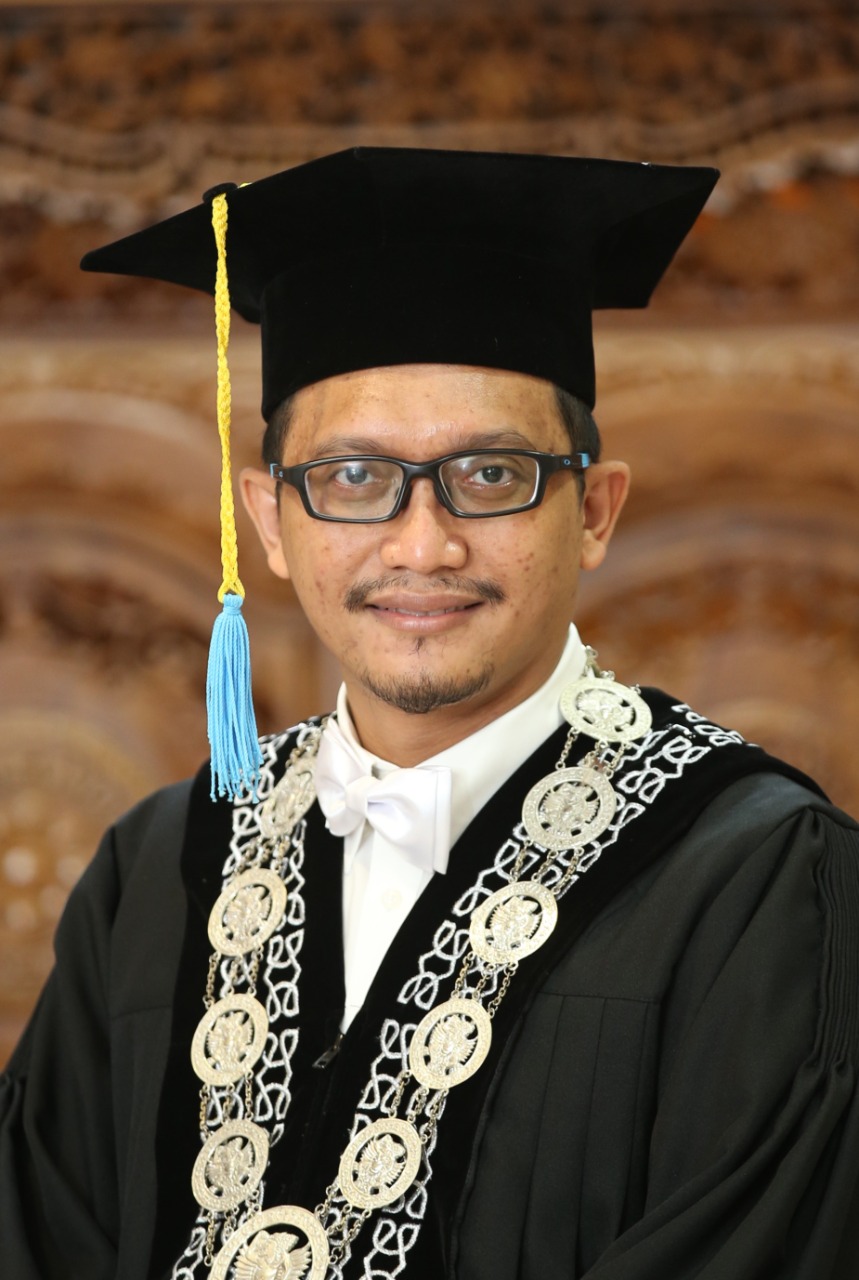The Impact of COVID-19 Pandemic on the Epidemiology of Hip and Knee Arthroplasty: A Two-Year Look into the Pandemic from A Single Tertiary Referral General Hospital in Indonesia

Downloads
Highlights:
- Arthroplasty surgeries were reduced significantly during the COVID-19 pandemic.
- The number of operations gradually increased between the first and second year of the pandemic.
- Patients' median age and hospital stays were reduced during the pandemic.
Abstract
Introduction: The COVID-19 pandemic has had significant effects on arthroplasty surgeries worldwide. Various studies have described decreased arthroplasty procedures among the most common orthopedic surgeries. This study aimed to analyze the effects of the pandemic on the epidemiology and demography of hip and knee arthroplasty in a tertiary referral general hospital in Indonesia.
Methods: This was a retrospective study of medical records data conducted on hip and knee arthroplasty cases from the pre-pandemic (April 2019–March 2020), first-year pandemic (April 2020–March 2021), and second-year pandemic (April 2021–March 2022) periods. Each period was compared for epidemiology and demography data, which included the annual number of arthroplasties, female-to-male ratio, age, duration of hospitalization, and in-hospital post-operative rehabilitation participation. All statistical data calculations were performed using the International Business Machines Corporation (IBM) Statistical Package for Social Sciences (SPSS) version 26.
Results: This study observed a statistically significant decrease of 232.00% for hip and 371.43% for knee arthroplasty performed during the first-year pandemic and an increase of 41.86% for hip and 74.07% for knee arthroplasty in the second-year pandemic. A decrease in median age and fluctuation of the female-to-male ratio were observed. The median duration of hospitalization was 80.00% shorter between the pre-pandemic and first-year pandemics and 11.11% shorter between the first and second-year pandemics. Participation in rehabilitation fluctuated during each period. There were four positive cases of COVID-19 and two cases of mortality during the first- and second-year pandemics.
Conclusion: The COVID-19 pandemic caused a significant reduction in arthroplasties performed during the first year and a slight increase during the second year. Several changes to the demographics of the patients were also observed between the pre-pandemic and the pandemic periods.
Singh JA. Epidemiology of Knee and Hip Arthroplasty: A Systematic Review. Open Orthop J 2011; 5: 80–85. [PubMed]
Bedard NA, Elkins JM, Brown TS. Effect of COVID-19 on Hip and Knee Arthroplasty Surgical Volume in the United States. J Arthroplasty 2020; 35: S45–S48. [PubMed]
Thaler M, Khosravi I, Hirschmann MT, et al. Disruption of Joint Arthroplasty Services in Europe during the COVID-19 Pandemic: An Online Survey within the European Hip Society (EHS) and the European Knee Associates (EKA). Knee Surg Sports Traumatol Arthrosc 2020; 28: 1712–1719. [PubMed]
Decruz J, Prabhakar S, Ding BTK, et al. The COVID-19 Pandemic in Singapore: What Does It Mean for Arthroplasty? Acta Orthop 2020; 91: 551–555. [PubMed]
Blum P, Putzer D, Liebensteiner MC, et al. Impact of the Covid-19 Pandemic on Orthopaedic and Trauma Surgery - A Systematic Review of the Current Literature. In Vivo 2021; 35: 1337–1343. [PubMed]
Santoso A, Persada G, Anwar IB, et al. Effect of Coronavirus Disease-19 Pandemic to the Volume of Total Hip and Knee Arthroplasty Surgical Service: Experience from a Single Tertiary Orthopedic Hospital in Indonesia. Open Access Maced J Med Sci 2020; 8: 642–645. [Journal]
Chen AZ, Shen TS, Bovonratwet P, et al. Total Joint Arthroplasty during the COVID-19 Pandemic: A Scoping Review with Implications for Future Practice. Arthroplast Today 2021; 8: 15–23. [PubMed]
Czubak-Wrzosek M, Czubak J, Grzelecki D, et al. The Effect of the COVID-19 Pandemic on Total Hip and Knee Arthroplasty Surgical Volume in 2020 in Poland. International Journal of Environmental Research and Public Health 2021; 18. [PubMed]
Kazubski K, Tomczyk Å, KopczyÅ„ski B, et al. The Epidemiology of Hip and Knee Primary and Revision Arthroplasties during the COVID-19 Pandemic. Healthc (Basel, Switzerland) 2021; 9. [PubMed]
D'Apolito R, Faraldi M, Ottaiano I, et al. Disruption of Arthroplasty Practice in an Orthopedic Center in Northern Italy during the Coronavirus Disease 2019 Pandemic. J Arthroplasty 2020; 35: S6–S9. [PubMed]
Khanna V, Nashikkar PS, Mahajan R, et al. Impact of COVID-19 Pandemic on Arthroplasty Services and Early Experience after Resuming Surgeries at a ‘Non COVID' Center. J Clin Orthop Trauma 2021; 21: 101515. [PubMed]
Simon S, Frank BJH, Aichmair A, et al. Impact of the 1st and 2nd Wave of the COVID-19 Pandemic on Primary or Revision Total Hip and Knee Arthroplasty-A Cross-Sectional Single Center Study. J Clin Med 2021; 10. [PubMed]
Moldovan F, Gligor A, Moldovan L, et al. An Investigation for Future Practice of Elective Hip and Knee Arthroplasties during COVID-19 in Romania. Medicina (Kaunas) 2023; 59. [PubMed]
Latijnhouwers D, Pedersen A, Kristiansen E, et al. No Time to Waste; The Impact of the COVID-19 Pandemic on Hip, Knee, and Shoulder Arthroplasty Surgeries in the Netherlands and Denmark. Bone Jt Open 2022; 3: 977–990. [PubMed]
Sumargono E, Anastasia M, Saleh I, et al. Total Knee Replacement Epidemiology in a Single Secondary Hospital before and after the COVID-19 Pandemic: A Descriptive Comparative Study. Hip Knee J 2021; 2. [ResearchGate]
Page L, Brin S. Google Sheets, https://google.com/sheets (2006).
Gates B, Allen P. Excel, https://office.microsoft.com/excel (2021).
Nie NH, Bent DH, Hull CH. Statistical Package for the Social Sciences (SPSS), https://www.ibm.com/support/pages/downloading-ibm-spss-statistics-26 (2018).
Setiawaty V, Kosasih H, Mardian Y, et al. The Identification of First COVID-19 Cluster in Indonesia. Am J Trop Med Hyg 2020; 103: 2339–2342. [PubMed]
Ahdika A, Primandari AH, Adlin FN. Considering the Temporal Interdependence of Human Mobility and COVID-19 Concerning Indonesia's Large-Scale Social Distancing Policies. Qual Quant 2023; 57: 2791–2810. [PubMed]
Brown TS, Bedard NA, Rojas EO, et al. The Effect of the COVID-19 Pandemic on Electively Scheduled Hip and Knee Arthroplasty Patients in the United States. J Arthroplasty 2020; 35: S49–S55. [PubMed]
Agrawal Y, Vasudev A, Sharma A, et al. Morbidity and Mortality in Patients undergoing Lower Limb Arthroplasty Surgery during the Initial Surge of the COVID-19 Pandemic in the UK at a Single-Speciality Orthopaedic Hospital. Bone Jt Open 2021; 2: 323–329. [PubMed]
Lim EJ, Kim M, Kim CH. Impact of the COVID-19 Pandemic on Mortality Following Hip and Knee Joint Arthroplasty Surgeries: A Systematic Review and Meta-Analysis. J Pers Med 2022; 12. [PubMed]
Copyright (c) 2024 Hanan Hanif, Rr. Indrayuni Lukitra Wardhani, Lukas Widhiyanto, Mohammad Zaim Chilmi

This work is licensed under a Creative Commons Attribution-ShareAlike 4.0 International License.
1. The journal allows the author to hold the copyright of the article without restrictions.
2. The journal allows the author(s) to retain publishing rights without restrictions
3. The formal legal aspect of journal publication accessibility refers to Creative Commons Atribution-Share Alike 4.0 (CC BY-SA).




























